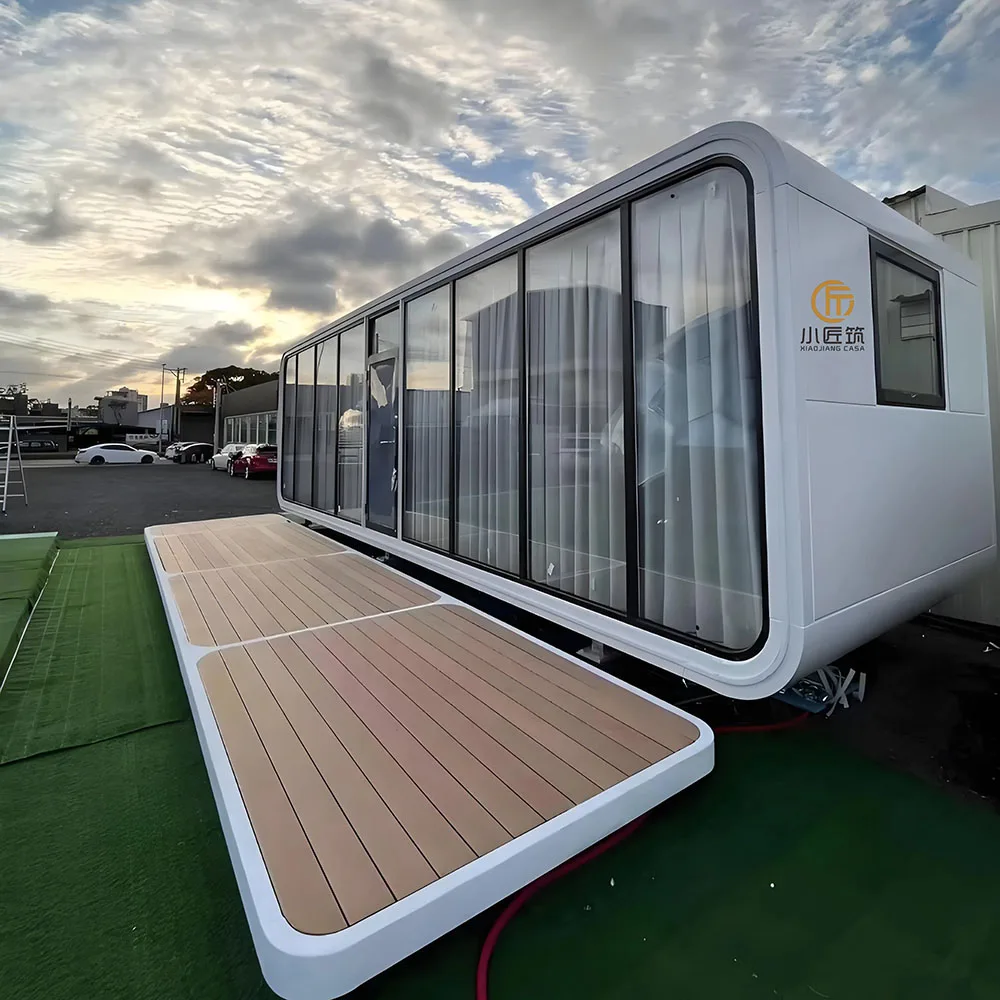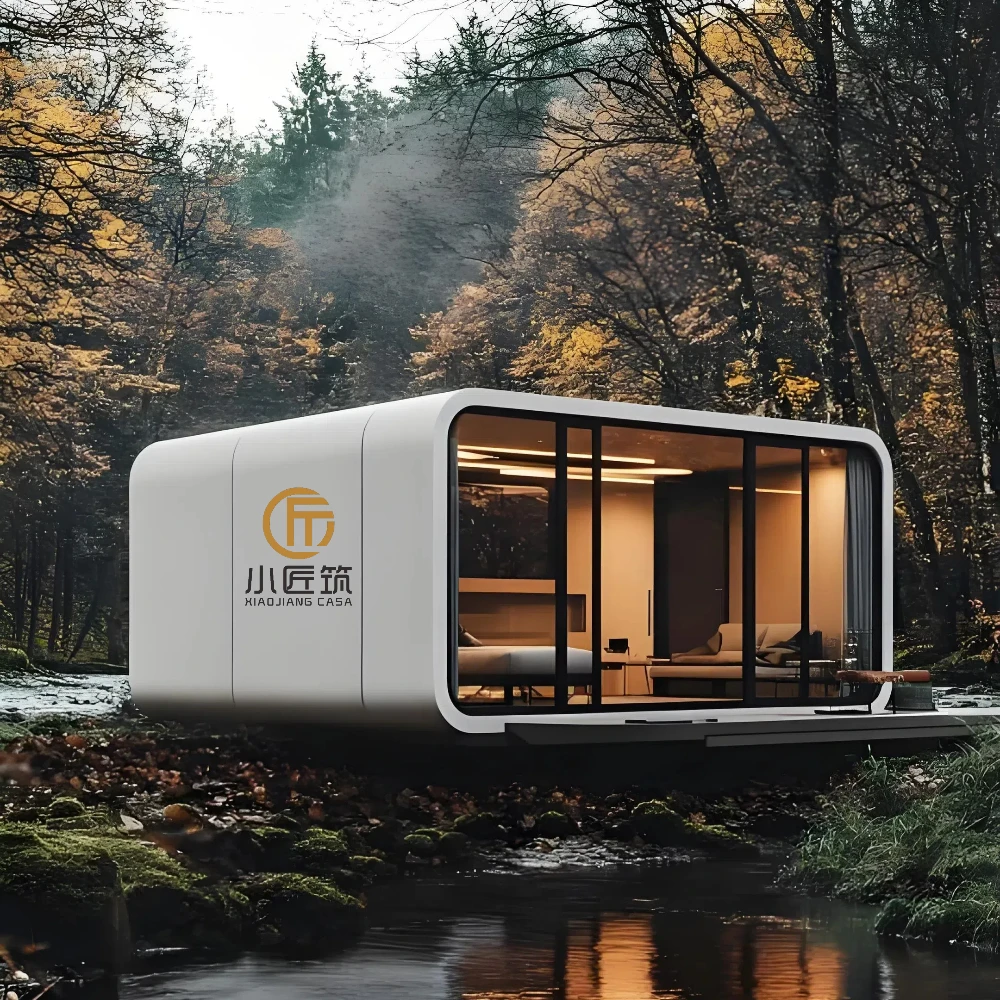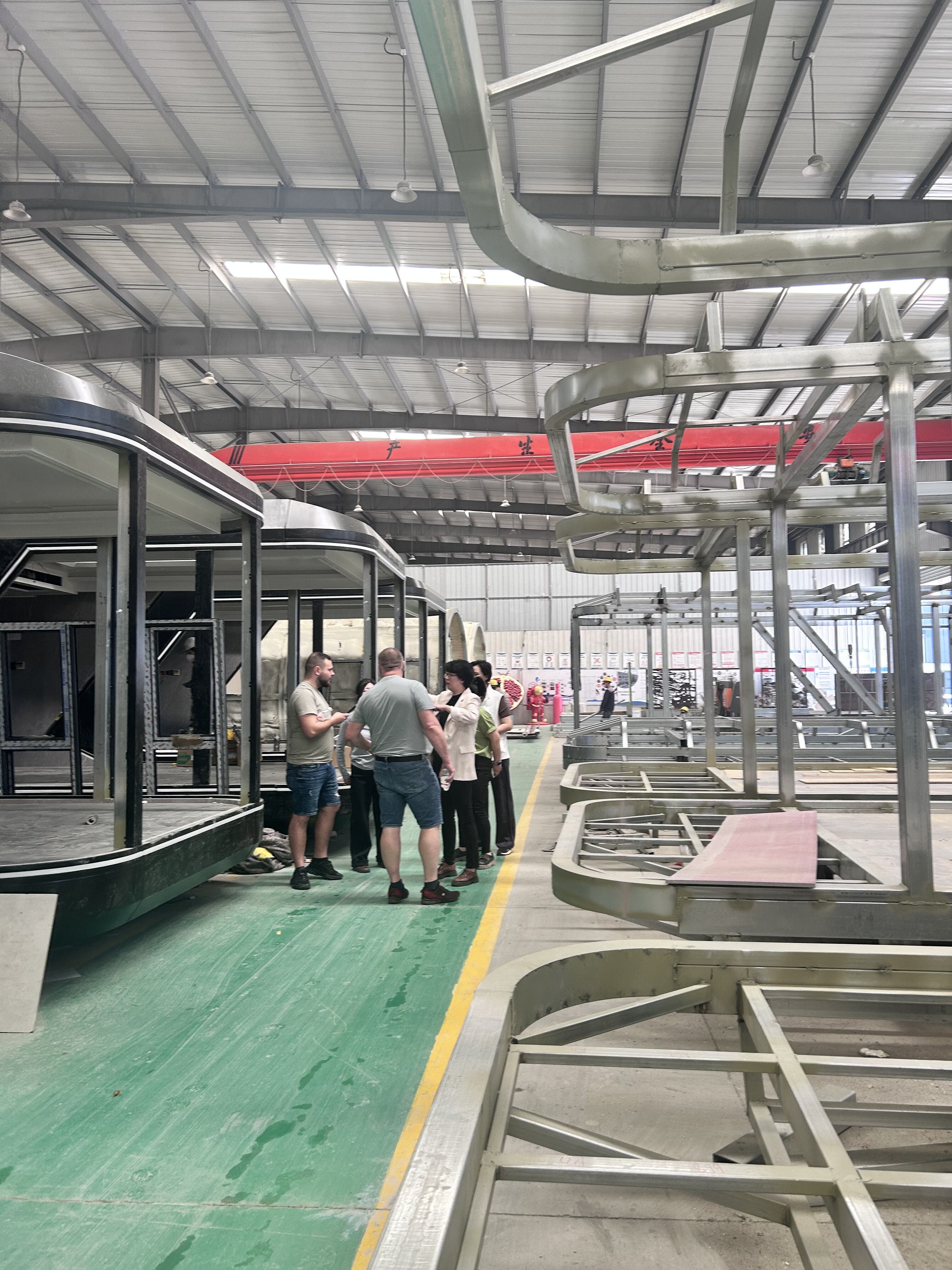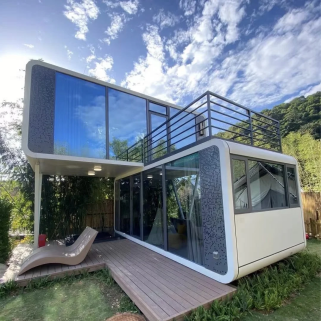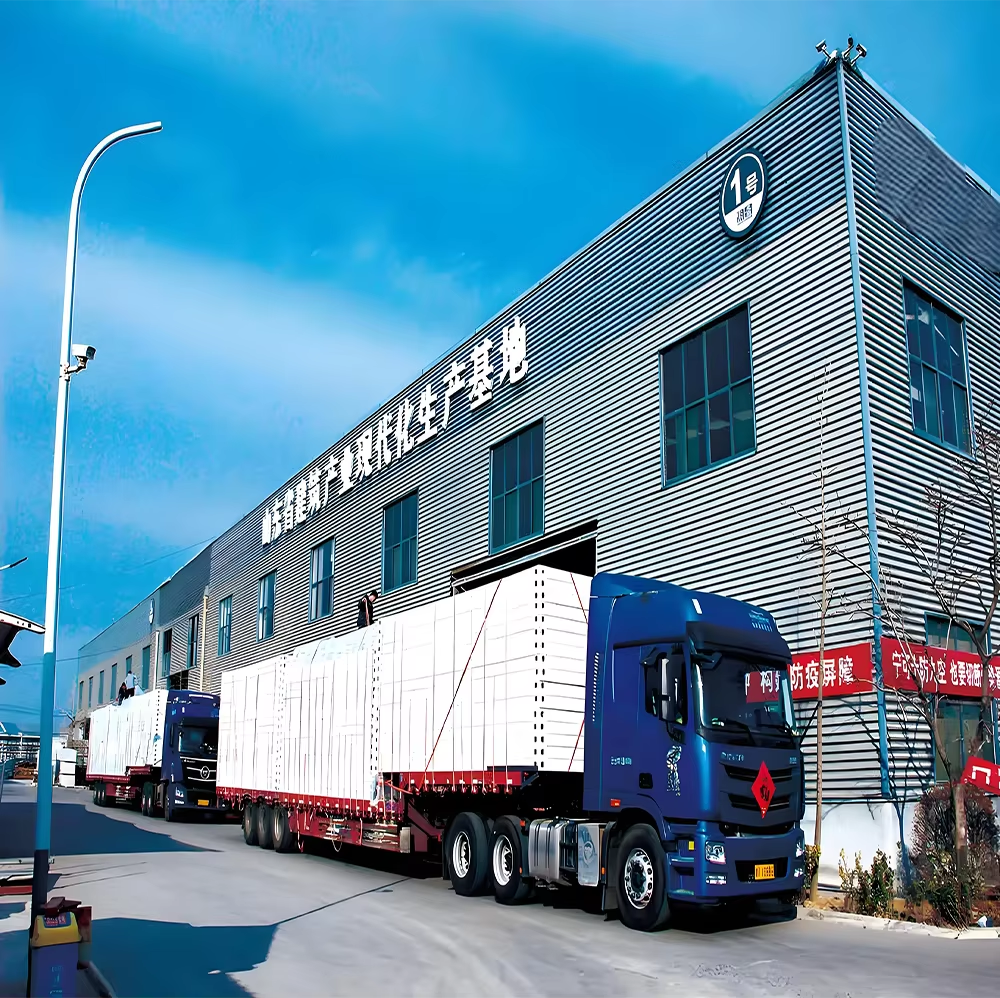Lifestyle Flexibility and Mobility: The Core Advantage of Mobile Houses
Freedom to Relocate and Embrace a Dynamic Lifestyle with Mobile Houses
Mobile houses are designed for portability, freeing residents from geographic limitations and eliminating the burden of selling property when relocating. This flexibility is especially beneficial for seasonal workers, military families, and adventure seekers who need housing that evolves with their lives rather than ties them to one place.
Location Independence Across Urban, Rural, and Coastal Areas
Thanks to modern engineering, mobile houses can be deployed in diverse environments—from dense urban neighborhoods to remote rural land and vulnerable coastal zones. Their adaptable foundations and lightweight, durable frames meet strict building codes for flood-prone and mountainous regions, offering versatility unmatched by traditional homes.
Meeting the Demand for Nomadic Living and Remote Work-Friendly Spaces
With 68% of mobile house owners working remotely full-time (2023 Global Remote Work Index), demand has surged for units equipped with dedicated workspaces and Starlink-ready roofing. These homes support a growing segment of professionals seeking mobility without sacrificing connectivity or productivity.
Case Study: Digital Nomads Thriving in Mobile House Setups
A two-year observational study tracked 45 professionals using mobile homes as hybrid living-workspaces. Participants reported 40% higher productivity and 31% lower living costs compared to traditional housing, with 89% relocating seasonally—demonstrating how mobility enhances both lifestyle and financial outcomes.
Integration with Off-Grid Systems for Truly Portable Living
Advanced models integrate solar roof tiles, composting toilets, and atmospheric water generators, enabling extended off-grid living. As shown in sustainable housing research, these systems reduce monthly energy expenses by 50–75% while maintaining modern comfort levels, making self-sufficient nomadic lifestyles increasingly viable.
Affordability and Financial Accessibility of Mobile House Ownership
Cost Comparison: Mobile Houses vs. Traditional Site-Built Homes
There's quite a big difference when it comes to what people actually spend on housing these days. Mobile homes that are completely set up usually range from around $25k all the way up to $75k. That's way cheaper than the average site built home which clocks in at about $349k according to last year's National Housing Report. And remember this includes getting them delivered and properly installed too! Most folks end up saving somewhere between half to three quarters of what they would otherwise spend. Not only that but there are other financial benefits as well. People who live in mobile homes tend to pay roughly 35 percent less each year for property taxes. Their insurance costs also come out about 22 percent below standard rates because these units meet certain safety standards. The folks over at Florida Value Homes did some research on this back in their 2024 report and confirmed exactly those numbers.
Lower Construction and Land Costs Driving Economic Benefits
Manufacturing homes in factories cuts down on building expenses quite a bit, somewhere around 30 to maybe even 45 percent when looking at bulk purchasing of materials plus the efficiencies gained from assembly line methods. What makes this approach really work well is the flexibility regarding where these units get placed. About two thirds of people who own manufactured homes actually put them on land they already own or lease instead of paying sky high prices for property in cities. According to market research folks, the combined cost for both land and the actual house comes out to roughly $108k across the country on average. For someone just starting out wanting to become a homeowner, manufactured housing offers what many consider the most practical path forward without breaking the bank.
Mobile Houses as Entry-Level Real Estate Investments
Mobile homes are becoming an accessible way for many people who struggle to afford traditional housing to start building wealth. The upfront costs are way lower than regular home purchases, often requiring just around 10% of what conventional mortgages demand. For instance, nearly half of all Gen Z homeowners started out in manufactured housing units. These younger buyers see real value growth too, sometimes gaining between 8 and 12 percent each year in good markets. What's interesting is that most folks who buy these homes don't stay there forever. About seven out of ten eventually move into bigger places within seven to ten years. They treat their first mobile home almost like a training ground for homeownership, gradually working their way up to more expensive properties as their finances improve over time.
Modern Design and Technological Advancements in Mobile Housing
Durable Materials and Weather-Resistant Exteriors Built for Longevity
Modern mobile homes are increasingly built with aerospace quality aluminum frames paired with fiber reinforced polymer exteriors that can handle gusts up to 130 miles per hour according to FEMA guidelines from 2022. The materials used resist corrosion too, often backed by impressive 50 year warranties against rust, while also offering about 30% improvement in insulation compared to regular vinyl siding options. For those living near coastlines, triple glazed windows filled with argon gas alongside tough polycarbonate panels have become pretty standard these days. This trend shows how manufacturers are adapting their designs to stand up better against harsh weather conditions brought on by climate changes.
Innovations in Structural Engineering and Climate Adaptability
Using cross laminated timber for chassis systems cuts down weight around 18 percent but actually boosts what they can carry. This makes it possible to install them even on ground that slopes as much as 15 degrees. For walls, phase change materials work wonders keeping inside temps stable from really cold -40 degrees Fahrenheit all the way up to scorching hot 120 F weather. The result? Buildings need their heating and cooling systems way less often when conditions get extreme outside. With these upgrades, most structures can be placed just fine throughout nearly every part of America's climate map. And best of all, many don't require those expensive permanent concrete bases anymore either.
Debunking Myths: Realities of Mobile House Lifespan and Quality
Old ideas about mobile homes don't hold water anymore when it comes to lasting power. The National Association of Home Builders found that around 87 out of every 100 mobile homes built after 2018 still have decent market value even after sitting there for 15 whole years. Factories these days are super precise too, getting wall assemblies right down to within 0.2 millimeters. That kind of accuracy beats what most contractors can manage on actual job sites by about three times over. And let's not forget quality checks either. Nearly four out of five manufacturers now go through third party certification processes. This means modern manufactured housing actually meets all the latest International Residential Code requirements, going way beyond those old HUD standards from decades ago.
Customization and Comfort: Redefining Interior Living in Mobile Houses
Modern mobile houses combine personalization with functionality, adapting to changing needs through smart design and modular components.
Smart Layouts and Space Optimization Through Multifunctional Furniture
Innovative interiors feature fold-down desks, convertible seating, and staircase storage to maximize limited square footage. Wall-mounted shelving reduces floor clutter by 40% compared to conventional layouts (Compact Living Institute 2023), while sliding partitions allow flexible reconfiguration between work and living areas.
Luxury Upgrades: Solar Panels, High-End Finishes, and Modern Amenities
Manufacturers now offer solar integration, quartz countertops, and Energy Star appliances as standard or affordable upgrades. Since 2021, such premium features have become 23% more accessible, with 72% of upgraded units including at least three smart home technologies like voice-controlled lighting and tankless water heaters—blending comfort, efficiency, and modern style.
Rapid Deployment and Scalable Housing Solutions Using Mobile Houses
Factory-Built Efficiency and Fast On-Site Setup
When it comes to building speed, factory production trims construction time down by around 60 to 70 percent. Most modular units are actually ready for people to move into within just 8 to 12 weeks according to data from the Modular Building Institute back in 2023. Inside these factories, everything happens in climate controlled spaces where workers put together those insulated panels and get all the wiring sorted out properly. Meanwhile outside, crews are already getting the ground ready so when the parts arrive they can start putting things together right away. For simpler designs, entire buildings can go up on site in less than three full days thanks to cranes doing much of the heavy lifting. This approach really cuts down on waiting around and reduces material waste compared to traditional methods.
Key advantages include:
- Standardized quality control via automated workflows
- Simultaneous foundation and utility work during manufacturing
- Faster permitting due to code-compliant modular designs
Applications in Disaster Relief, Transitional Housing, and Rural Development
Mobile houses excel in emergency response—after Hurricane Maria, 340 units provided shelter in Puerto Rico within 72 hours. According to 2025 disaster response data, they shorten shelter deployment timelines by 83% versus traditional builds. Beyond crises, they serve critical roles in:
- Rural healthcare: Mobile clinics supporting remote Alaskan communities
- Workforce housing: Temporary accommodations for renewable energy project crews
- Urban infill: Stackable micro-units revitalizing vacant city lots
A 2024 World Bank report notes these units reduce infrastructure costs by 40% in developing regions by incorporating off-grid systems like solar power and composting toilets—proving their scalability and adaptability worldwide.
FAQ Section
What are the advantages of living in a mobile house?
Living in a mobile house offers flexibility to relocate, affordability compared to traditional homes, and adaptability to diverse environments. It's ideal for digital nomads, seasonal workers, and those seeking a dynamic lifestyle.
Are mobile houses a good investment?
Mobile houses are increasingly seen as entry-level real estate investments, offering a lower cost of ownership with potential for value growth, especially for first-time homeowners such as Gen Z buyers.
Can mobile houses withstand severe weather conditions?
Yes, modern mobile houses are constructed with durable materials like aerospace-quality aluminum frames and fiber reinforced polymers, designed to meet stringent building codes for flood-prone and mountainous regions.
How energy-efficient are these mobile houses?
Advanced models of mobile houses include solar roof tiles and smart home technologies, significantly reducing energy costs while maintaining modern comfort levels.
What are the deployment and setup times for mobile houses?
Factory-built mobile houses can be ready for occupancy within 8 to 12 weeks, offering rapid deployment solutions for disaster relief and transitional housing.
Table of Contents
-
Lifestyle Flexibility and Mobility: The Core Advantage of Mobile Houses
- Freedom to Relocate and Embrace a Dynamic Lifestyle with Mobile Houses
- Location Independence Across Urban, Rural, and Coastal Areas
- Meeting the Demand for Nomadic Living and Remote Work-Friendly Spaces
- Case Study: Digital Nomads Thriving in Mobile House Setups
- Integration with Off-Grid Systems for Truly Portable Living
- Affordability and Financial Accessibility of Mobile House Ownership
- Modern Design and Technological Advancements in Mobile Housing
- Customization and Comfort: Redefining Interior Living in Mobile Houses
- Rapid Deployment and Scalable Housing Solutions Using Mobile Houses
- FAQ Section


